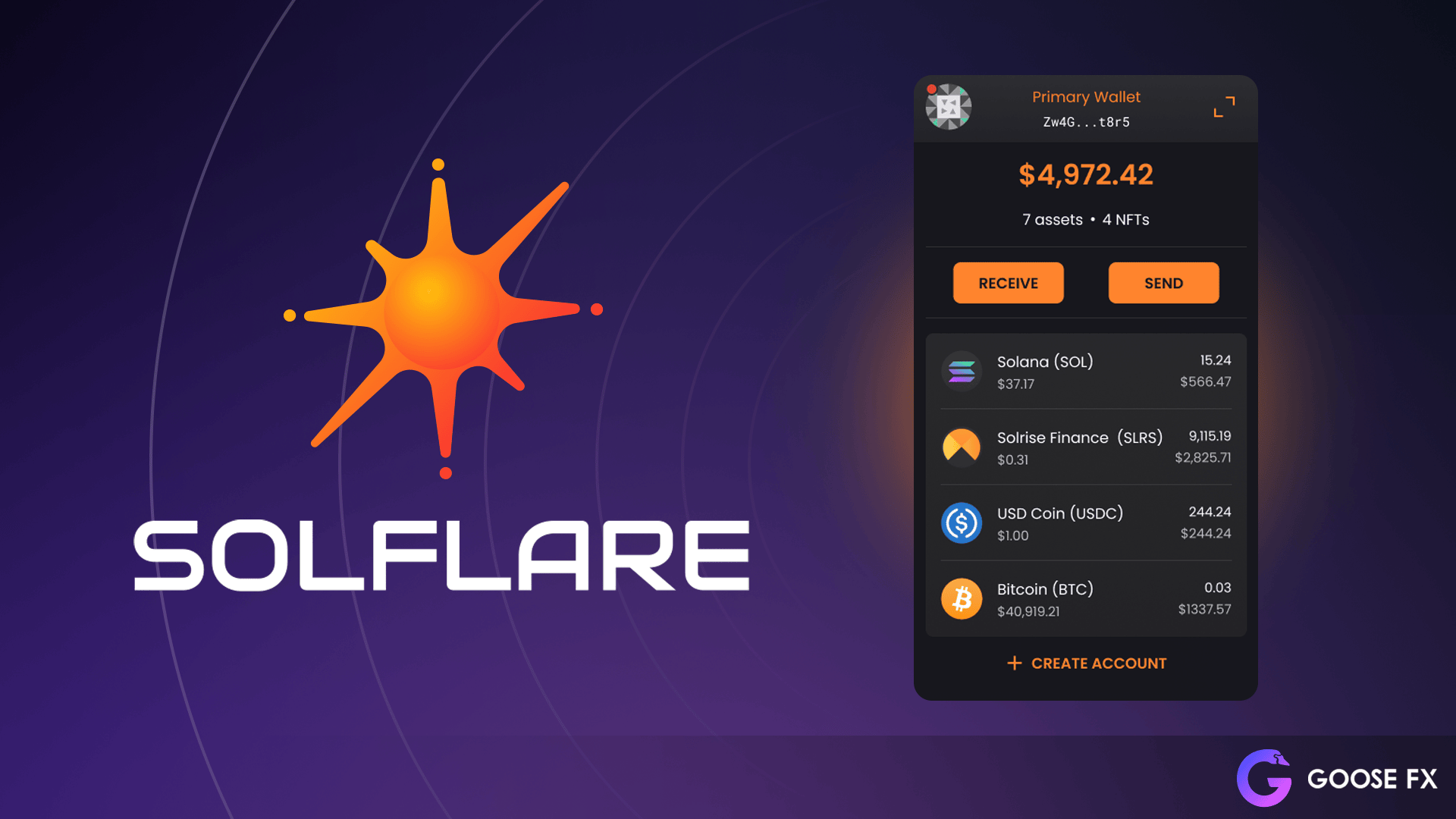Navigating NFT Management and Validator Choices with the Solflare Wallet
Okay, so check this out—NFTs on Solana have been blowing up lately, and with that comes this wild tangle of managing your digital assets. Seriously, sometimes it feels like juggling flaming swords, especially if you’re trying to stake or dive into DeFi while keeping your NFTs safe and sound. My first thought was, “Man, this has to be simpler.” But then I realized, nah, it’s just the nature of this beast—crypto’s rapid pace means we gotta stay sharp and flexible.
Here’s the thing. Managing NFTs isn’t just about holding them anymore; it’s about integrating them within a whole ecosystem of wallets, validators, and staking options. For Solana users, that ecosystem depends heavily on your wallet choice. I’ve been using the solflare wallet for a minute now, and it’s been a game changer—especially when it comes to validator selection and staking. But more on that later.
Wow! NFTs aren’t just collectible JPEGs anymore; they’re becoming functional assets that can unlock DeFi opportunities or access to exclusive communities. But managing them means juggling private keys, tracking token metadata, and making sure your wallet plays nice with the platforms you want to engage with. At first, I thought any wallet would do. Nope. You want one that’s secure but also versatile. The Solflare wallet fits that bill pretty well, with some caveats I’ll get into.
Something felt off about how many wallets claim “NFT support” but really mess up when you try to stake or delegate. That’s why validator selection matters more than you’d think—especially if you’re staking SOL from within your wallet to support network security and earn rewards. Remember, not all validators are created equal, and your choice can affect your earnings and even the security of your holdings.
Let me rewind a bit. Initially, I thought, “Why not just pick the validator with the highest yield and call it a day?” But then I realized, wait—there’s more to it. Validator uptime, reputation, community involvement, and fees all factor into the equation. On one hand, chasing the highest APY seems smart, though actually, that could backfire if the validator underperforms or behaves maliciously. So, it’s about balancing returns with reliability.
Now, about NFT management in the Solana ecosystem—different from Ethereum’s monster gas fees, Solana offers blazing fast and cheap transactions, which is great for moving NFTs around or interacting with dApps. But this speed means you want a wallet that can keep up without compromising security. The Solflare wallet ticks those boxes. Plus, it’s got a clean UI that, honestly, makes it less intimidating for folks who are still getting their feet wet.
Hmm… one thing that bugs me, though, is the occasional lag when loading certain NFT collections within the wallet interface. It’s not a dealbreaker, but it’s a reminder that the ecosystem is still maturing. Also, I’ve noticed that some newer NFT projects require specific wallet permissions during transfers or staking, which can be confusing. The solflare wallet handles permissions smoothly, but you gotta stay alert to those prompts.
Check this out—there’s an image of the Solflare interface displaying an NFT collection, highlighting how it organizes assets clearly, with staking options right there. It’s not just about holding; it’s about interacting smartly.

Why Validator Selection Is More Than Just Numbers
When you’re staking SOL, the validator you delegate to isn’t just some faceless node. Behind every validator is a team with their own track record, level of transparency, and operational security. Choosing poorly could mean lower yields or, worse, potential slashing risks—though that’s rare on Solana compared to other chains.
In my experience, platforms like the solflare wallet offer curated lists of validators with stats and community ratings. That helps cut through the noise. But here’s a gut feeling—sometimes the validators with the flashiest numbers aren’t the best pick long term. Look for validators who communicate openly and have consistent uptime. It’s the crypto equivalent of picking a financial advisor you can trust.
Also, something very very important: validator fees eat into your staking rewards. Even a percent or two can add up over time. So, factor that in. The solflare wallet interface makes fee comparisons straightforward, which is a huge plus, especially if you’re delegating from multiple accounts or managing NFT staking rewards simultaneously.
Oh, and by the way, some validators offer cool perks beyond just staking rewards—like access to exclusive NFT drops or governance votes. That’s a layer of community involvement that often gets overlooked but can be very rewarding.
Honestly, I’m biased, but the combination of managing NFTs and staking via the solflare wallet just feels right. It’s like having a Swiss Army knife tailored for Solana. The integration is smooth enough that I don’t have to jump across five apps just to move, stake, or check my assets.
Still, I’m not 100% sure if the wallet will keep pace with all the upcoming ecosystem changes, especially as NFT utilities evolve. But for now, it’s solid and growing.
Getting Started Without Losing Your Mind
If you’re new to this, the learning curve can be steep. Here’s a little advice from someone who’s stumbled a few times: don’t rush. Take time to familiarize yourself with how your wallet handles NFTs, staking, and validator choices. The solflare wallet’s website has a pretty straightforward download and setup guide that helped me avoid some rookie mistakes. You can find it here.
Wow! The biggest hurdle is always security. Losing access to your wallet means losing your NFTs and staking rewards—no do-overs. So, make sure you back up your seed phrase securely and avoid shady browser extensions. The solflare wallet supports hardware wallets too, which is a nice security boost if you want to go that route.
One quirk I’ve noticed is that sometimes, when switching between staking and NFT management modes, the wallet can feel a bit clunky or slow to sync. It’s not a dealbreaker, but it’s worth knowing going in. This probably reflects Solana’s rapid network growth and the battle to keep interfaces responsive.
By the way, if you’re curious about validator selection strategies, there’s a ton of community chatter and tools out there. But balancing yield, security, and perks is definitely an art, not a science. For instance, some people prefer delegating to smaller validators to support network decentralization, even if the returns are slightly lower. I’ve done that occasionally—felt good about it—but sometimes the math just doesn’t add up.
At the end of the day, your wallet choice influences how easily you can pivot between these approaches without hassle. That’s why I keep coming back to the solflare wallet—it’s got enough flexibility without overwhelming you with options.
Frequently Asked Questions
Can I manage both NFTs and staking within the same wallet?
Yes, wallets like the solflare wallet support both NFT management and SOL staking seamlessly, letting you switch between tasks without needing multiple apps.
How do I choose a reliable validator?
Look for validators with high uptime, transparent teams, reasonable fees, and community trust. The solflare wallet provides stats and ratings to help with this decision.
Is staking my SOL safe?
Generally, yes, but always be aware of slashing risks and choose reputable validators. Using wallets that support hardware devices can add a layer of security.
Are there any perks beyond staking rewards?
Some validators offer NFT drops, governance participation, or other community benefits. It’s worth exploring these extras if you want more than just passive income.
Partner links from our advertiser:
- Real-time DEX charts on mobile & desktop — https://sites.google.com/walletcryptoextension.com/dexscreener-official-site-app/ — official app hub.
- All official installers for DEX Screener — https://sites.google.com/mywalletcryptous.com/dexscreener-apps-official/ — downloads for every device.
- Live markets, pairs, and alerts — https://sites.google.com/mywalletcryptous.com/dexscreener-official-site/ — DEX Screener’s main portal.
- Solana wallet with staking & NFTs — https://sites.google.com/mywalletcryptous.com/solflare-wallet/ — Solflare overview and setup.
- Cosmos IBC power-user wallet — https://sites.google.com/mywalletcryptous.com/keplr-wallet/ — Keplr features and guides.
- Keplr in your browser — https://sites.google.com/mywalletcryptous.com/keplr-wallet-extension/ — quick installs and tips.
- Exchange-linked multi-chain storage — https://sites.google.com/mywalletcryptous.com/bybit-wallet — Bybit Wallet info.
Get Free Online Visa Assessment Today!
Top Rated By Customers & Immigration Firms With 98% Success Rate.
Quick Links
Importants Links
Follow Us
- info@imperiumvisas.com
- +971 52 111 9828
- +971 4 410 7580
- Ontario Tower Office No. P404, Business Bay, Dubai, U.A.E

